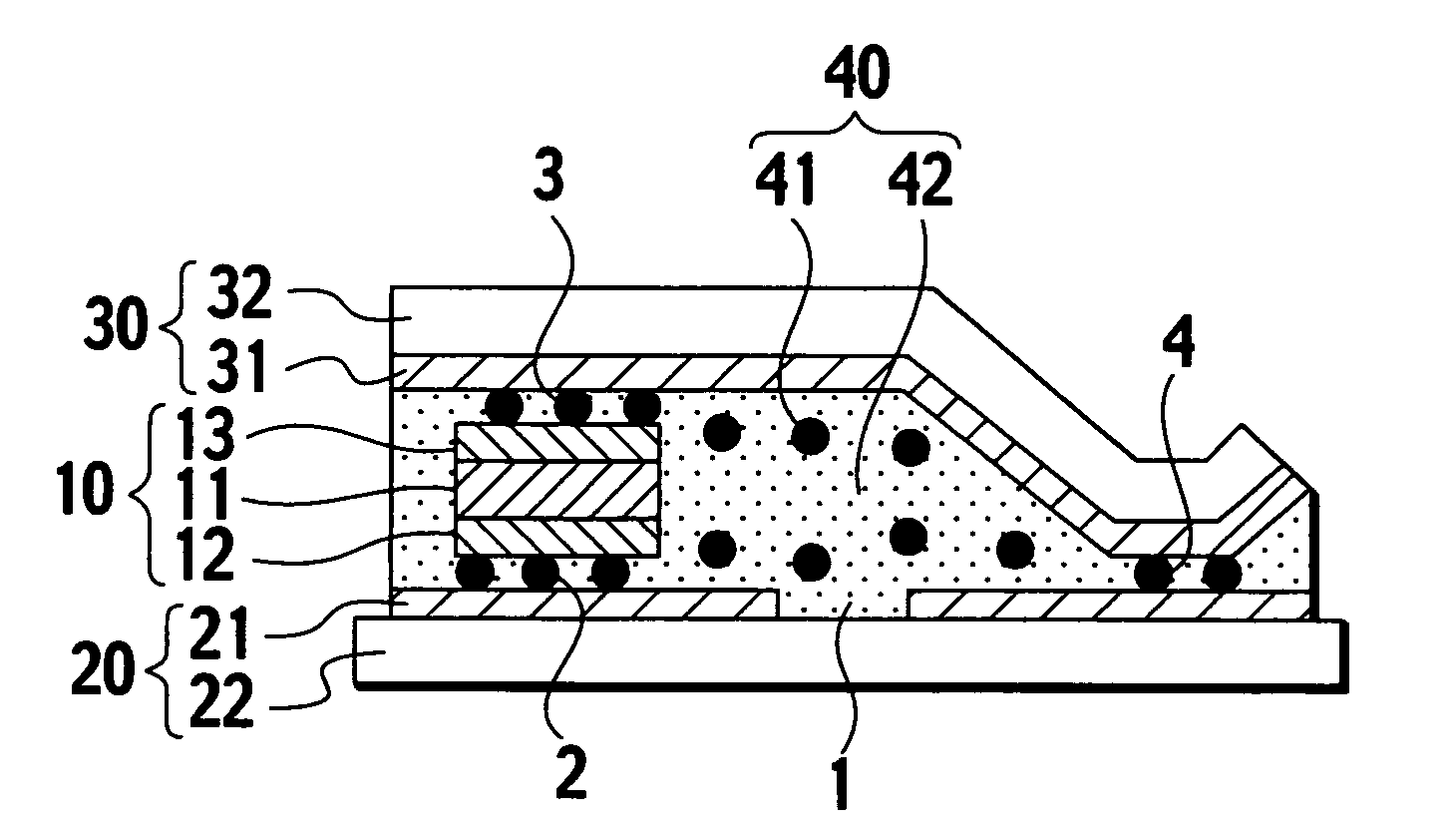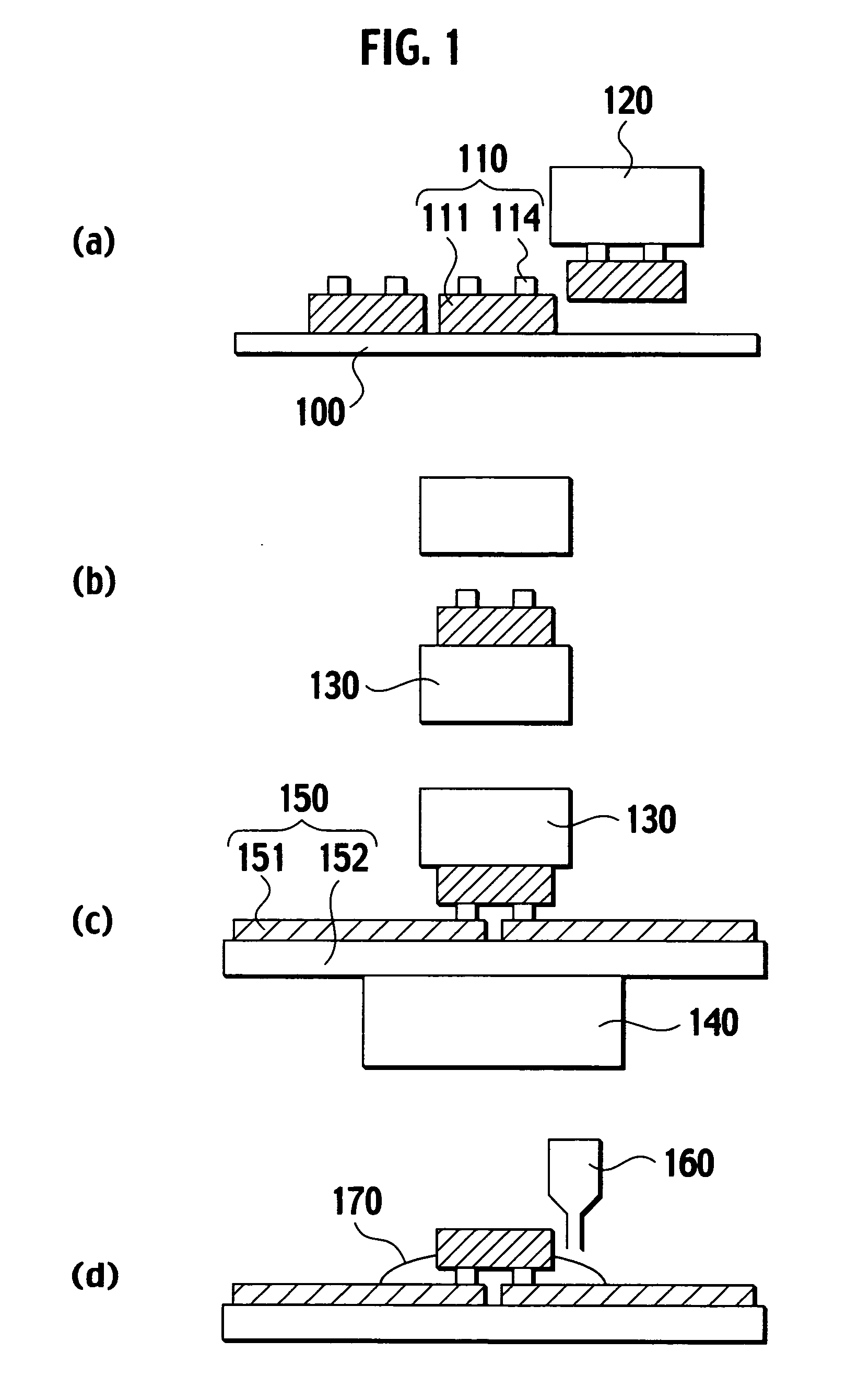Manufacturing method for electronic device
- Summary
- Abstract
- Description
- Claims
- Application Information
AI Technical Summary
Benefits of technology
Problems solved by technology
Method used
Image
Examples
embodiment 1
[0067] A first embodiment of the present invention will now be described with reference to FIG. 3.
[0068] As shown in FIG. 3 (a), an etching resist is formed by screen printing on an aluminum film surface of a tape form substrate manufactured by adhering aluminum film of a thickness of 9 μm to a polyethylene terephthalate substrate 22 of a thickness of 50 μm using an adhesive agent. Next, an antenna circuit 21 is formed continuously on the aluminum film surface using ferric chloride solution as an etching liquid. Here, the antenna thickness for each antenna circuit 21 is 2.5 mm, the thickness of the slit is 0.5 mm, and the antenna circuits 21 are formed at a pitch of 3 mm.
[0069] As shown in FIG. 3 (b), approximately 10000 IC elements 10 each having a thickness of 0.15 mm and a length and width both of 0.4 mm and having an external electrode formed respectively on the faces of each of the opposing pair of faces thereof are supplied to a high frequency parts feeder 70. The parts feed...
embodiment 2
[0078] A second embodiment of the present invention will now be described with reference to FIG. 4.
[0079] As shown in FIG. 4 (a), an etching resist is formed by screen printing on an aluminum film surface of a tape form substrate manufactured by adhering aluminum film of a thickness of 9 μm to a polyethylene terephthalate substrate 22 of a thickness of 50 μm using an adhesive agent. Next, a continuum of antenna circuits 21 is formed on the aluminum film surface using ferric chloride solution as an etching liquid. Here, the antenna thickness for each antenna circuit is 2.5 mm, the width of the slit is 0.5 mm, and the antenna circuits are formed at a pitch of 3 mm.
[0080] Next, as shown in FIG. 4 (b) an anisotropic conductive adhesive layer is formed in the determined position on the antenna circuits 21 by lamination at a temperature of 80° C. of an anisotropic conductive adhesive film 40 (AC-2052P-45 by Hitachi Chemical) having a width of 2 mm, and then removal of the separator film...
embodiment 3
[0090] The third embodiment will now be described.
[0091] The third embodiment is the same as the second embodiment up until the steps shown in FIG. 3 (f), wherein the processing of the first circuit layer 20 is performed, an anisotropic conductive adhesive layer 40 is formed by laminating the anisotropic conductive adhesive film on the antenna circuit 21, the IC elements having external electrodes formed on the respective surfaces of the opposing pair are arranged and delivered and the IC elements are individually arranged in the determined positions on the antenna circuit 21.
[0092] Then, an anisotropic conductive adhesive film having the same width as the above anisotropic conductive adhesive film is laminated at 80° C. over those arranged IC elements, and the separator film is removed forming an anisotropic conductive adhesive layer 40.
[0093] Next, a tape form substrate 2 mm wide is prepared by adhering aluminum film of a thickness of 9 μm to a polyethylene terephthalate substr...
PUM
 Login to View More
Login to View More Abstract
Description
Claims
Application Information
 Login to View More
Login to View More - R&D
- Intellectual Property
- Life Sciences
- Materials
- Tech Scout
- Unparalleled Data Quality
- Higher Quality Content
- 60% Fewer Hallucinations
Browse by: Latest US Patents, China's latest patents, Technical Efficacy Thesaurus, Application Domain, Technology Topic, Popular Technical Reports.
© 2025 PatSnap. All rights reserved.Legal|Privacy policy|Modern Slavery Act Transparency Statement|Sitemap|About US| Contact US: help@patsnap.com



